The 2016 Ars Electronica Festival once again includes a festival-within-a-festival. u19 – CREATE YOUR WORLD showcases award-winning projects in the Prix Ars Electronica’s category for kids and young people. The recipients are under 19 years of age and have come up with especially exciting and inspiring projects, ideas and gadgets. How does the world of tomorrow look? What aspects must by all means be conserved, and what’s in desperate need of change? u19 – CREATE YOUR WORLD’s epithet is “Future Festival of the Next Generation” to bring out the essence of its mission: considering, discussing and conducting research on where our world is heading and how we can influence that course.
In previous years, the exhibition was designed by adults, which means that neither its concept nor its form had much to do with young people themselves. That’s changing this year. CREATE YOUR WORLD curator Susi Windischbauer and exhibition designer Gerald Priewasser-Höller invited the prizewinners to a one-day workshop in PostCity to collaboratively create an exhibition concept.
We discussed what went on there and what came out of it with the two adults and three young people, Dimitri Teufl, Felix De Montis and Johannes “Joey” Eschner.

Credit: Vanessa Graf
This is the first time that youngsters are involved in designing the CREATE YOUR WORLD exhibition. What went on at the workshop and why?
Susi Windischbauer: We invited the u19 winners to work with us on the exhibition’s concept and design. Up to now, we just took matters into our own hands. This morning, we went through all the projects, so everybody could present his/her work. And it was immediately apparent that the projects have a lot more potential than you might have originally thought if you had just viewed videos and photos. Now, the point is to show the projects in the best possible light in order to clearly demonstrate to visitors exactly why this work has been singled out for recognition.
The workshop’s concept is to create interrelationships among the respective projects. We don’t want to just line them up one after another; what we actually want to do is to tell a story: How they’re interrelated, and how this gives rise to a sort of contiguousness. Gerald and I had the idea of building a kind of landscape with cities as nodes. The landscape consists of projects, which are interconnected by lines, and we’ve succeeded in realizing this in the form of scaffolding. Now we need to give some consideration to how we’re going to employ this framework, what we’re actually going to make out of this construction that emerged from today’s workshop. Whether to adopt it as is, develop it further into some other form, or apply it to some other idea isn’t so important at this point. Actually, the first item on the agenda is placing the projects in relation to one another.
Gerald Priewasser-Höller: The idea behind this is the necessity of finding a basis that the u19 participants have in common despite the fact that they’re not acquainted with each other, and doing it in a way that doesn’t excessively impose an idea on them as to how the exhibition ought to look. Our approach was simply to figure out how they themselves can recognize the interconnections among the projects, and discover on their own how this might even yield synergies and give rise to new ideas. The construct is only an aid—it depicts these undiscovered elements between the individual projects, regardless of whether they’re pragmatic links, or of a substantive, organizational or technical nature. The point is to give each individual the chance to bring in her/his own interests and thereby to engender something architectural, something abstract, something structural, even if, at first glance, it’s as opaque as the interconnections themselves. The workshops will bring out the connections.
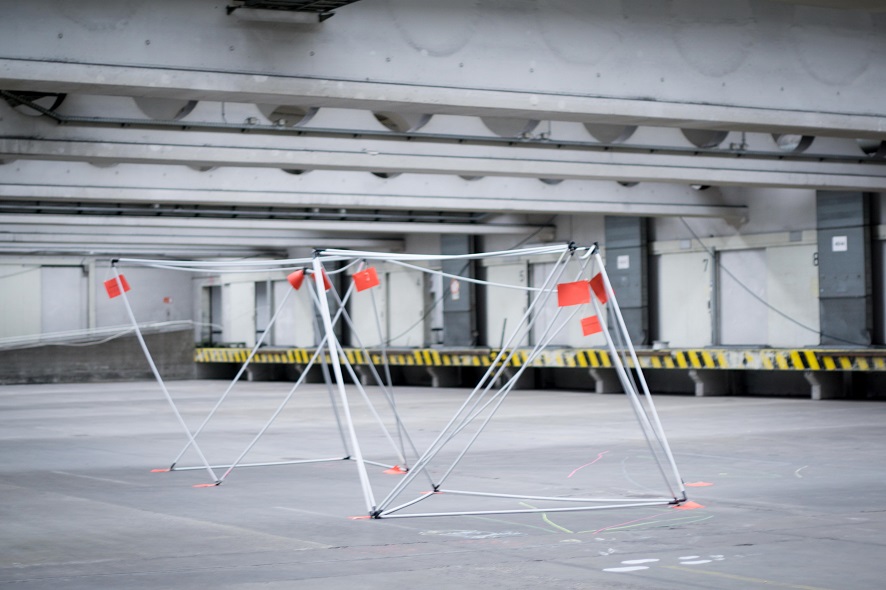
The construction that represents the connections between the different projects (the red cards).
Credit: Vanessa Graf
What’s to be gained by designing the exhibition jointly with young people?
Susi Windischbauer: In my opinion, the added value is that it enables us to better understand the projects. For example, we saw a video entitled “Guilt,” and I think that the fact that we saw it together with the youngster who created it made it clear that this video needs a lot more in terms of explanation—what led up to it, some background information, and how it was made. For me, the production counts as much as the product itself, and I think that holds true for all projects. Sometimes, the end product isn’t even the most important thing; it’s what this young people was thinking, how they even came to actually start working on this particular project. I find this is so much more compatible with the motto “Create Your World” than the product itself. Sometimes it gets lost in the shuffle, but the process is essential. You simple see that these are highly committed individuals who’ve given a tremendous amount of thought to what they’ve done, and if you just exhibit the projects, then you can’t also get across how committed these people are. Now, following the workshop, we’ve really got our work cut out for us if we’re going to present these projects in a way that does justice to them. I think it was worth holding the workshop for this reason alone.
Gerald Priewasser-Höller: The way I see it, it’s a matter of respect, or a means of showing appreciation to all the youngsters who submitted entries to u19. The also-rans are deserving of the same treatment as all the other participants. They’re offered the opportunity to present their work on Ars Electronica’s platform, which means that these projects are publicized and attain wide visibility. That’s why I think it’s great that, just like invited artists, the exhibition isn’t curated or dictated externally, and this, in turn, means that these young people can identify more strongly with Ars Electronica’s offerings.
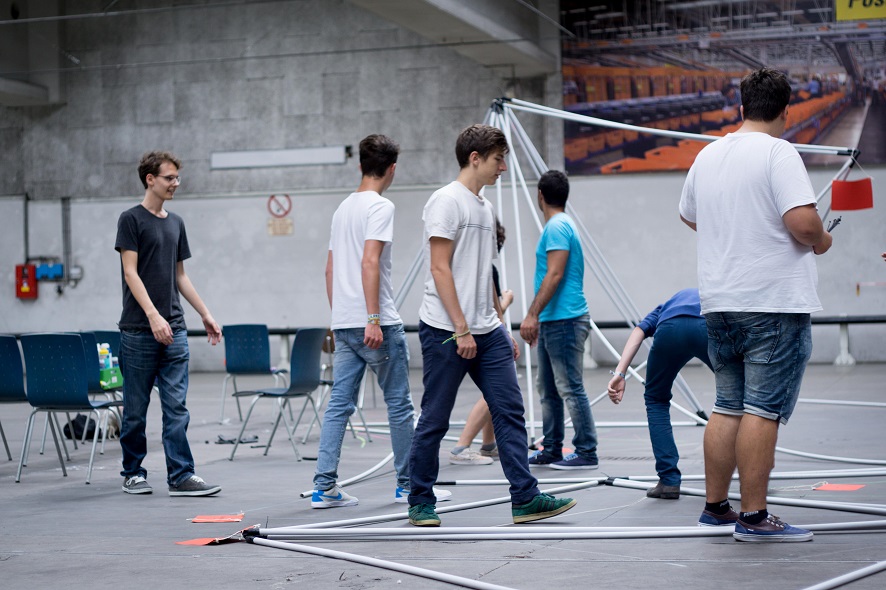
Credit: Vanessa Graf
What do you hope that these youngsters will be able to take away from the workshop?
Susi Windischbauer: I think that this gives young people the feeling they’re being treated as equals. By way of introduction, we told them that our motivation was that we produce installations with all artists and give them free rein in going about this. They come to us, install their projects themselves and actually do everything on their own. For u19, we’ve always been the ones who’ve done this up to now or we did it for them in some way.
Gerald Priewasser-Höller: It’s not always possible to immediately respond with an experience-oriented answer at such a workshop. You often have to mull things over for quite a while and then you take something away from it. The discussions that you get into at these workshops also yield correlations that you don’t even realize right away. I think that it’s precisely the processual nature of such a workshop that makes it so valuable. At some point, you end up coming across something similar and you’ll recall that you’ve already been involved in something like this. In any case, I think it’s great how they all presented themselves with such tremendous self-confidence. The works are of very high quality and are also quite touching.
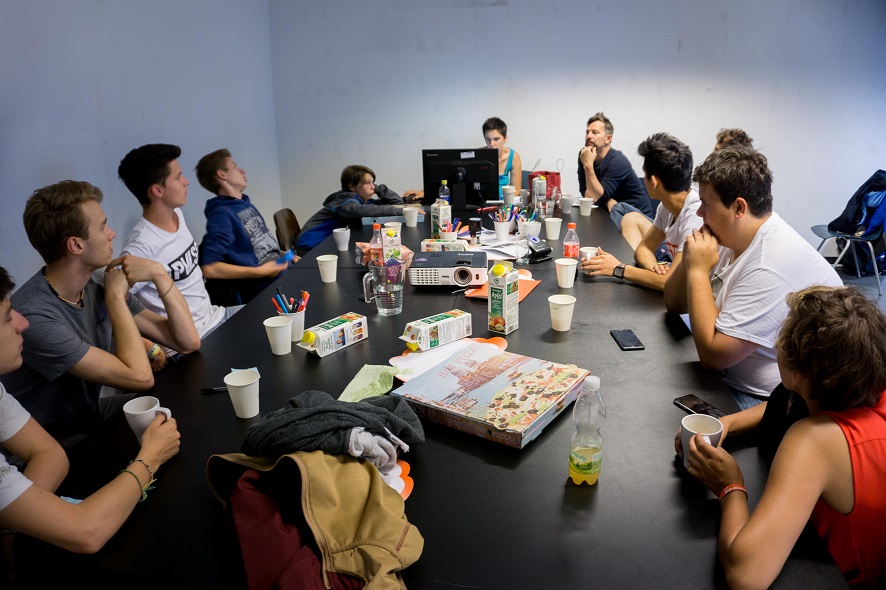
Credit: Vanessa Graf
Dimitri, Joey and Felix, with what projects did you take part in the workshop?
Dimitri Teufl: I did a project entitled “Flucht” [flight] which, like the name says, is about asylum seekers and how they fled from their homelands and came here. These are people who had to leave their homes because of war, because of famine, because they didn’t have any more money or maybe they were unemployed. I made a LEGO stop-motion film about this subject. I created various scenes with LEGO figures, which you move a little before each shot. Then you edit the shots together and when you play them back, the result is fluid movement just like in a movie.
Joey Eschner: Our project is named “Reflecty.” It’s a smart mirror that, in contrast to other smart mirrors that are available, can also function as the main interface for a smart house. Three or four years ago, we began to do various projects together. Last summer we decided to move into an apartment as roommates, and then we had this idea with the mirror. We had seen similar projects before and we thought we’d like to improve on them. We wanted to add features and create a mirror that can display information and that you can also interact with.
Even interaction is possible with the smart mirror designed by Joey Eschner and Felix De Montis.
How important is it for you to take part in the exhibition design workshop?
Dimitri Teufl: I think it’s very important that you can have some input into this because, after all, you’ve definitely given some thought to the projects and how they’re going to be displayed. You often imagine a really cool exhibition, and if you can’t plan it yourself and can’t have much say in how it’s going to look, then, I mean, like, what’s the point? At the workshop today, there was enough time to bring in your own ideas, and I think we’ll be permitted to have a lot of input into the final product. And we also briefly presented our own ideas.
Felix De Montis: It’s important for us to be able to get “Reflecty” across the way we imagine it. If the whole exhibition were designed by someone else, we might not really be able to present our smart mirror in the way that we think is most effective. It would probably just stand there but, for instance, there wouldn’t be any interaction with the lights or other things that are possible.
Joey Eschner: The idea has been proposed to maybe design this exhibition like a living room, and this is an absolutely perfect solution for our mirror because, after all, that’s the whole idea behind it. Actually, I think it’s really fascinating to be able to propose something like that.
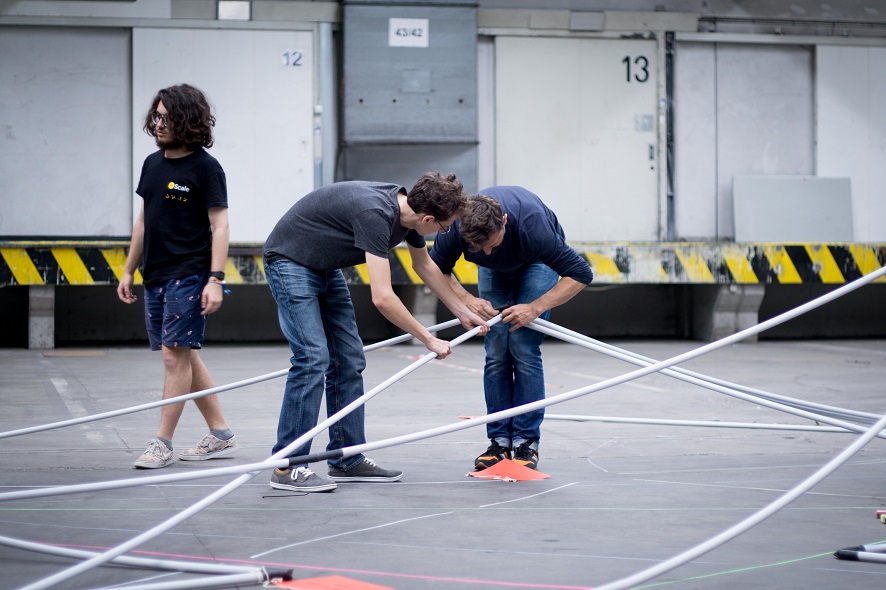
Credit: Vanessa Graf
What do you expect from the collaboration with the curator, Susi Windischbauer, and the exhibition developer, Gerald Priewasser-Höller?
Joey Eschner: We pretty much expected what we experienced at the workshop. We wanted to see how this’ll be set up, what options are available to do some networking with the others—in the truest since of the word, with the construction that we built, but also on an interpersonal level, to discover interconnections. Building the scaffolding was fun and interesting—above all, if it really does become a part of the exhibition, to visualize the projects and not just as a prop. In any case, it’s better than if you just write a list and interconnect the various things with it.

Susi Windischbauer, born in 1983, studied History of Art and Cultural Management at the University of Graz. Before working at Ars Electronica, she had worked with several cultural and youth organisations, including the Boy Scouts and Girl Guides of Austria, the Austrian National Youth Council, as well as the International Summer Academy of Fine Arts in Salzburg. In 2007, she started as a member of the Prix/Festival team at Ars Electronica Linz. Now, she is responsible for the youth category of the renowned Prix, “u19 – CREATE YOUR WORLD”.
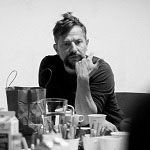
Gerald Priewasser-Höller studied Space and Design Strategies at the University of Arts and Industrial Designs in Linz before starting to work at Ars Electronica. Since 2006, he is responsible for the Architectural Design and Creative Technologies of exhibitions at the institution.
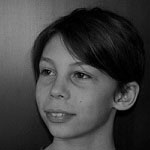
Dimitri Teufl (born 2003), is 13 years old, lives in Tyrol and attends Wörgl High School. He is interested in football, making mini-videos and playing games on his computer. Much of his attention is taken up by his little sister, Naima. He received an Award of Distinction at this year’s Prix Ars Electronica, in the u19 category for youngsters under 19.
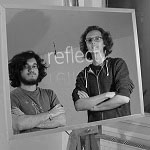
Felix De Montis and Johannes Eschner were both born in 1997 and have been working on projects in the field of computer science ever since they were schoolboys. Felix programs various (Web) projects; Johannes specializes in (3-D) design and visualization. Together, they enjoy tinkering on their inventions’ hardware. They have received an Honorary Mention at this year’s Prix Ars Electronica, in the u19 category for youngsters under 19.
The u19 – CREATE YOUR WORLD Festival is being held during the Ars Electronica Festival, September 8-12, 2016, in PostCity, the former Austrian Postal Service logistics facility next to the main train station at Bahnhofplatz 12, 4020 Linz, Austria.
